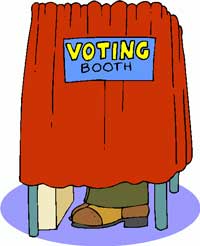I've been a broadcast meteorologist on television since the early 1990's. Happy to answer any questions about the weather or local TV news. Yes, I often wear sneakers on set just out of view of the camera.
Good question, Nathan. It would be somewhat dependent on what you think you might like to do. If you are interested in working for the National Weather Service, private industry, or doing research, I would say yes, go for the degree. By contrast there are a number of people in TV who do not have specific degrees in meteorology. Research schools carefully. Places like the University of Oklahoma are very heavy on math and geared toward research. Mississippi State has a TV program. Whatever your goal a degree will help. Good luck!
There is a really neat effect on radar in several parts of the country, including parts of central Texas. In the evening the bat colonies spread out to begin feeding. You can see them on radar staring as a small point, then an ever increasing fan or arc spreads out as they move. That or ghosts. (insert evil laughter here...)
Looks like you are both right, Jane. In broad terms, storm systems move from west to east across the US, usually with the jet stream. The jet is amplified in wave patterns, kind of like snapping a bed sheet over a bed. Sometimes storms will approach you from the southwest, traveling up the "hill" of the wave, and other times from the northwest, coming down the hill. Great question, thanks!
Hello, Ladies. Yup, there sure are. Not knowing the age group of your audience makes it a little diffucult for me to give an answer. I'd start with an Internet search, and, basic meteorology books, espeically ones geared toward kids are also a good resource. Goog luck!
Election Inspector
 Do most poll staffers agree that the ballots are REALLY confusing?
Do most poll staffers agree that the ballots are REALLY confusing?
Beauty Queen
 Have you ever suspected that the judging in a pageant was rigged?
Have you ever suspected that the judging in a pageant was rigged?
Pharmacist
 Have you ever given someone the wrong prescription?
Have you ever given someone the wrong prescription?
I think most of us generically call it "the clicker". It is a simple wireless controller hooked up to the weather computer to advance to the next map. Some have several buttons for higher functions like dropping cutouts on the maps or drawing. Back in the day some stations simply used a garage door opener. Good question. Thanks Harry.
When rain falls it creates friction with the air around it, and a downdraft. Friction creates heat with can evaporate water (cloud droplets) and downdraft is also a warming process. Sounds to me like the cloud that created the rain evaporated by the time you felt the drops and looked up. Cool!
Excellent questions. Your point about "standing where the weather is coming from" is a good one and they should move to the other side of the screen when referencing approaching weather. Having made a number of weather graphics in my day, the tendancy is to put your local area in the center of the screen. On the east coast this would leave a large part of the right hand side of the maps showing ocean, not as visually appealing (this is a bigger issue since the introduction of widescreen digital TVs).
As far as standing on screen at all, it is to be able to directly point at specific features and to be able to make a greater connection with the audience by making "eye contact" with the viewer. Thanks!
-OR-
 Login with Facebook
Login with Facebook (max 20 characters - letters, numbers, and underscores only. Note that your username is private, and you have the option to choose an alias when asking questions or hosting a Q&A.)
(A valid e-mail address is required. Your e-mail will not be shared with anyone.)
(min 5 characters)
By checking this box, you acknowledge that you have read and agree to Jobstr.com’s Terms and Privacy Policy.
-OR-
 Register with Facebook
Register with Facebook(Don't worry: you'll be able to choose an alias when asking questions or hosting a Q&A.)